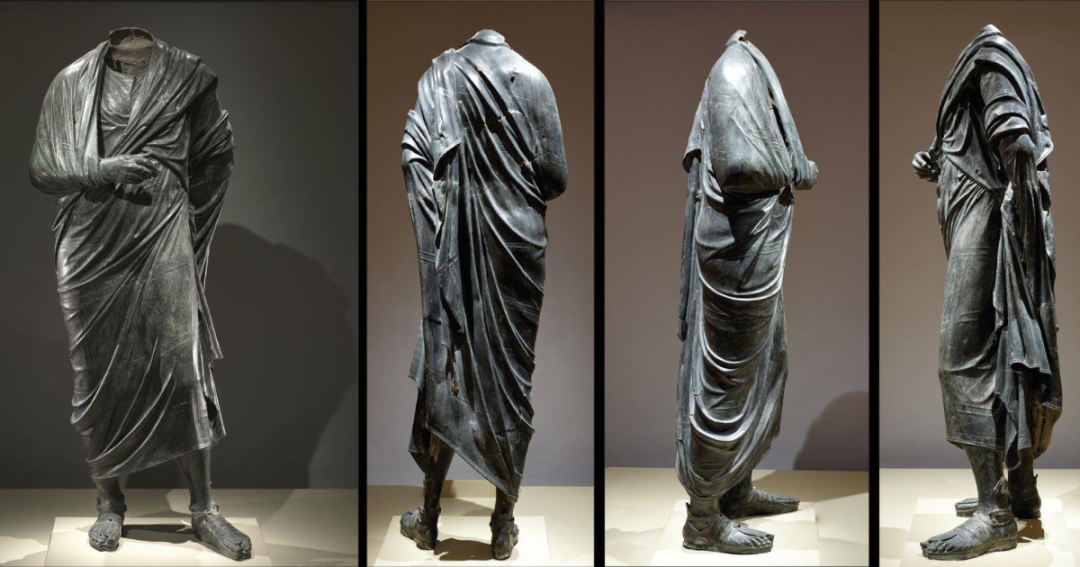Ancient Roman Masterpiece Returns to Türkiye. The statue of Marcus Aurelius, once held by the Cleveland Museum of Art’s is now being returned to Türkiye
This repatriation follows years of scientific research and legal investigation. Experts recognize the statue as one of antiquity’s finest bronze artifacts. Notable for its depiction of the Roman emperor as a philosopher.
Looters illegally excavated the statue in the 1960s from Boubon, an ancient city in Burdur, Türkiye. Dating to the 2nd or 3rd century AD, the statue originally stood in the Sebasteion, a major Roman cult structure. It will return to its homeland later this year.

A Smuggled Treasure Passed Through Many Hands
This bronze statue, once lost to Anatolian history, was illegally excavated and smuggled abroad during the 1960s. Over the decades, it passed through several owners before arriving at the Cleveland Museum of Art in Ohio. Türkiye spent more than 65 years trying to recover it. Although Prof. Dr. Jale İnan had exposed the looting of artifacts from Boubon, the Marcus Aurelius statue remained unrepatriated; until now.
Since 2021, Türkiye’s Ministry of Culture and Tourism has collaborated with the New York Manhattan District Attorney’s Office and U.S. Homeland Security Investigations (HSI) to recover several Boubon-origin artifacts, including statues of Lucius Verus, Septimius Severus, and Emperor Caracalla.
Scientific Evidence and Legal Proceedings Confirm the Statue’s Origin
Türkiye’s Ministry of Culture and Tourism spent decades researching the statue’s origins. By combining fieldwork with earlier scientific data, researchers confirmed that the statue came from the Sebasteion at Boubon.
Archival records, academic studies, and excavations at the site provided conclusive proof of the statue’s provenance.
Witness accounts of widespread looting in the 1960s added key evidence to the case. Based on this and other findings, the Manhattan District Attorney’s Office and Homeland Security Investigations ruled in favor of Türkiye’s claim. They seized the statue from the Cleveland Museum of Art.
Museum’s Legal Challenge Overruled: The Artifact Returns Home
In October 2023, the Cleveland Museum of Art contested the statue’s seizure in court, arguing that its origins were uncertain. However, Türkiye presented compelling scientific evidence that decisively refuted the museum’s claims.
Despite possessing conclusive proof, the Ministry of Culture and Tourism opted for a diplomatic approach. Thusly accommodating the museum’s request for further scientific analysis.
Under the Ministry’s supervision in May 2024, a silicone cast of the statue’s base was taken at the museum. The cast revealed a perfect match with pedestals from Boubon.
Additional lead isotope, stone, and soil analyses were conducted by Prof. Dr. Ernst Pernicka. Pernicka is an archaeometry expert appointed by the museum, alongside Ministry conservators. These impartial tests, carried out at Germany’s Curt Engelhorn Center for Archaeometry, confirmed that the statue had been buried in Boubon for centuries.
Presented with indisputable scientific evidence, the Cleveland Museum of Art ultimately accepted the statue’s repatriation, a decision officially conveyed to Türkiye by the Manhattan District Attorney’s Office.
A Landmark Victory for Cultural Heritage Preservation
This achievement not only marks a significant milestone in protecting Türkiye’s cultural heritage but also serves as a pivotal success in the global fight against antiquities trafficking.
Türkiye’s Ministry of Culture and Tourism remains resolute in its mission to reclaim looted artifacts through diplomatic, legal, and scientific efforts. The return of the Marcus Aurelius statue stands as a defining victory in this ongoing pursuit of cultural justice.

